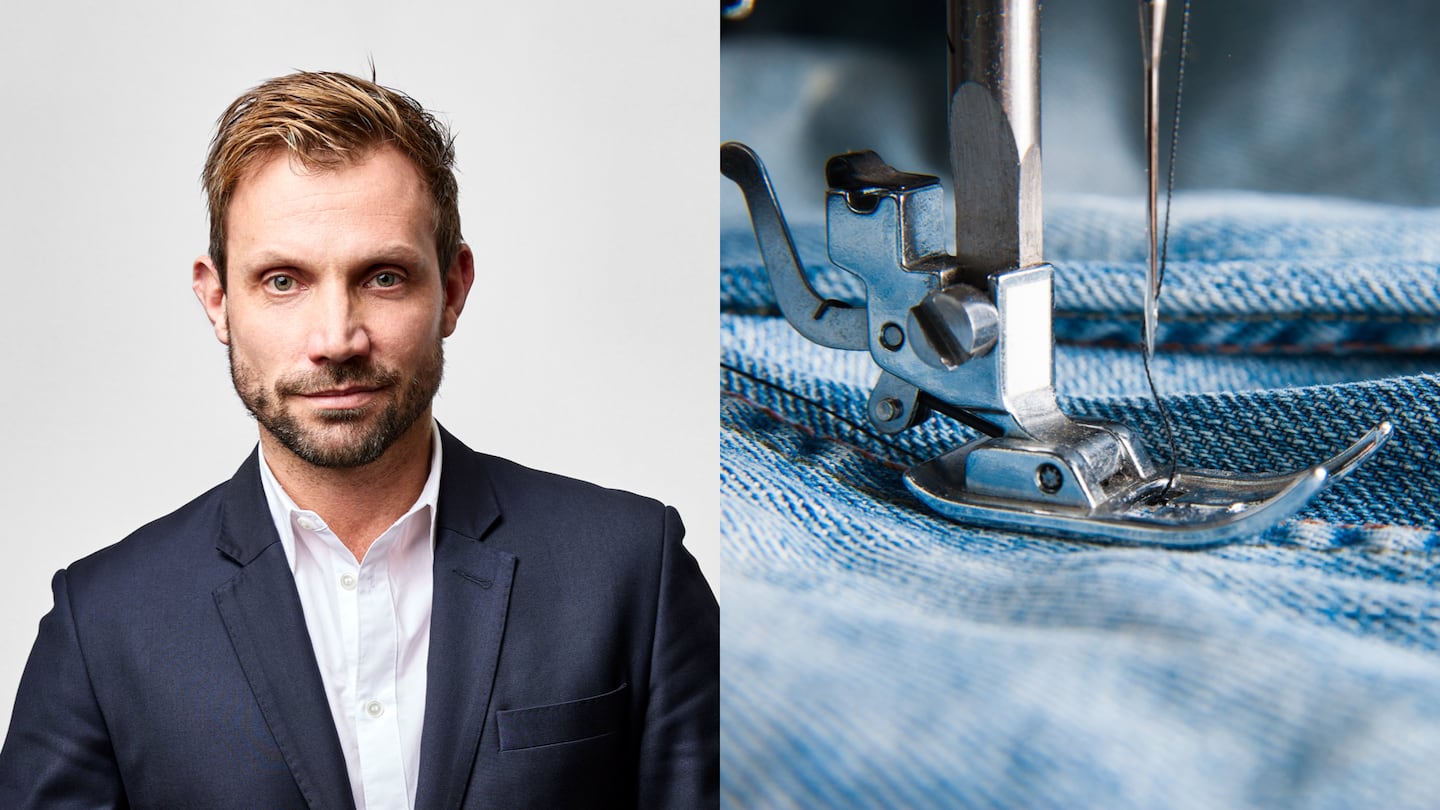
The Business of Fashion
Agenda-setting intelligence, analysis and advice for the global fashion community.

Agenda-setting intelligence, analysis and advice for the global fashion community.

 Opens in new window
Opens in new window“They thrive, we thrive” is a catchphrase that captures David Savman’s approach to running PVH’s supply chain. Since leaving H&M in 2022 to become the chief supply chain officer of the US owner of Tommy Hilfiger and Calvin Klein, Savman has put relationships front and centre across a supply chain that relies on around 300 garment manufacturers in approximately 30 countries, building on PVH initiatives such as its first supply-chain financing programme that provides suppliers with better financing rates based on their sustainability performance.
As he explains, having strong relationships across a supply chain “is the way we do business; it gives you a possibility to stand ready when whatever happens.”
BoF: After the turbulence caused by the Covid-19 pandemic, how would you characterise the impact on supply-chain relationships between brands, retailers and their suppliers?
David Savman: It became clear during the pandemic which relationships were really strategically strong, transparent and reliable, and which ones were not. It is also clear that the suppliers that were able to use their relationships with brands and retailers to find more-[long-term] solutions are the ones now working with the best [partners] in the market. There are a lot of brands and retailers out there, [and] it’s much more important for everyone to work with strong business partners from whatever side.
ADVERTISEMENT
Both suppliers and retailers are more cautious in how each of us progresses. Who do you work with? Why do you work with them? What’s the value that we bring to the table? What’s our common goal? Are we equally vested in what we’re going after? It becomes much more obvious that it is a win-win relationship [when both partners] have answers to those questions [that align]. It’s part of a transformation in the way we think about supply-chain partnerships for the last 10 years, but the pandemic really accelerated that.
Even if you run your own company in a good way, there are still fluctuations in the market that affects the whole market, right? We want to be transparent both in terms of being up-front and candid about what we see changing, but also having frequent data flows to make sure we have the same view of reality all the time. Of course, that’s not super easy on a day-to-day basis due to a lot of reasons.
BoF: In terms of the day to day, what are you doing to ensure the transformation you’ve mentioned continues to happen?
DS: I’ve been in this industry and in this field for many, many years. I don’t think I’ve ever spoken to suppliers as much as I have in the last 10 months, first [because of] being brand new at PVH, but also to build on what I’m hearing [about] what are their pain points, what works for them, what doesn’t work for them. How do we do this better? What is it that’s important for them to know? When do they actually need to know it?
What has surprised me through all of the conversations is seeing that there is still a big upside for the fashion retail industry to take bigger steps in how much more systematic and granular we need to be when we look at demand planning, supply planning, inventory management, regardless [of where we are based]. Each and every one of us has to be sharper [in all those areas], with supply models that are more agile, precise and diverse than before — everyone needs allocation algorithms that are flexible.
BoF: You’ve mentioned inventory — how should companies be thinking of inventory management in the year ahead?
DS: I think what the industry needs, and what we’re doing a lot at PVH, is [creating a mindset that] inventory is the most valuable asset we have, not only from a financial perspective, but also in terms of where capital is employed. … You can’t afford today to not make amazing products, at least not from where we stand. You also cannot afford to not be very granular in your demand planning, in your inventory planning, in your supply models, and really treat your inventory as the most precious thing you have. That’s where you put all your effort, your creativity. That’s how your brand comes to life with the consumer. It’s also how you run a sustainable, efficient business model around a fashion retailer.
BoF: Where will the conversations around offshoring, nearshoring and onshoring head?
ADVERTISEMENT
DS: The important part of this is to ask why you do it, and that comes back to treating inventory as one of the most important things you have. To be able to have good inventory, take care of that inventory, make it available to your consumer and be responsive, you need to have production in different parts of the world. We are a global company. So, it’s going to be nearshore to one market and far away from another one.
I think that the [terms] nearshoring and onshoring are a bit un-modern in a global company. Does a global brand like PVH need a multiple country-of-origin sourcing strategy to be able to run great availability with less inventory? Absolutely. Does it involve asking, ‘Am I going to nearshore?’ No. But it’s still a valid point that you need a diverse sourcing strategy, especially if you’re a brand active in every part of the world.
BoF: For companies like PVH with supply chains that are global, a key part of sustainability — being able to trace where fibres and materials are sourced — is even more complex given the amount of information that needs to flow through multiple supply-chain tiers. Technology advances have helped, including the use of blockchain. But would you say advances in traceability and other moves towards more supply-chain sustainability would be accelerating now if it weren’t for regulators pressing for change?
DS: It’s a tough question to answer. I don’t know if it’s accelerated or not. Probably. [But] it’s what the consumer wants. It’s what the store associates and your [other] staff want. It is what the shareholders and the financial markets want. We all want it to move as quickly as possible, so if anyone has managed to accelerate it, that’s … a positive thing.
No one in this industry wants to hide where our fibres are from. That doesn’t exist. It’s just a complex thing. It’s how it has built up for hundreds of years. … It doesn’t come from bad intention, but now when we go back, there is untangling to do. A lot of them have already been done, and a lot of these technologies will help.
BoF: There’s the critical human side of the supply chain that often doesn’t get discussed as much as it should. What can executives of retailers and brands do to uphold social rights in supply chains, regardless of economic cycles or headwinds that we might be facing in 2024?
DS: The answer is to run a much more granular, precise supply chain. If I go to my biggest suppliers and say, ‘Here is how we see it, and we’re going to update you, and I’m going to do it on each and every level of the supply chain,’ I know that [the impact of any consumer demand shifts] is going to be smaller for everyone. If we talk to each other often enough and we have a strong strategic relationship, you trust that what I say is accurate. Therefore, you won’t add 20 percent, or you won’t remove 20 percent, from your operations. In contrast, if you don’t trust me and you do add upside or remove downside, the next level will do the same.
The problem is when you don’t have this, they’re sitting blind, and then if all of a sudden demand totally disappears, or triples, they struggle to handle it, and this will impact their employees. The solution is based on better data and integrated systems, but it’s also based on something as simple as trust, and making sure that you do what you say you’re going to, if you do that over and over ... they’re with you on that journey. That builds the possibility for them to continue to grow their business. It’s like it’s the absolutely best thing that can happen to us, that our suppliers continue to thrive, and invest in innovation, sustainable solutions, circularity, technology and so on. The day they don’t, then I’m troubled.
ADVERTISEMENT
This interview has been edited and condensed.
This article first appeared in The State of Fashion 2024, an in-depth report on the global fashion industry, co-published by BoF and McKinsey & Company.
The eighth annual State of Fashion report by The Business of Fashion and McKinsey & Company reveals an industry navigating deep uncertainty. Download the full report to understand the 10 themes that will define the industry and the opportunities for growth in the year ahead.

Janet Kersnar is Executive Editor at The Business of Fashion. She is based in London and oversees long-form content, including Case Studies and Reports.
Designer brands including Gucci and Anya Hindmarch have been left millions of pounds out of pocket and some customers will not get refunds after the online fashion site collapsed owing more than £210m last month.
Antitrust enforcers said Tapestry’s acquisition of Capri would raise prices on handbags and accessories in the affordable luxury sector, harming consumers.
As a push to maximise sales of its popular Samba model starts to weigh on its desirability, the German sportswear giant is betting on other retro sneaker styles to tap surging demand for the 1980s ‘Terrace’ look. But fashion cycles come and go, cautions Andrea Felsted.
The rental platform saw its stock soar last week after predicting it would hit a key profitability metric this year. A new marketing push and more robust inventory are the key to unlocking elusive growth, CEO Jenn Hyman tells BoF.